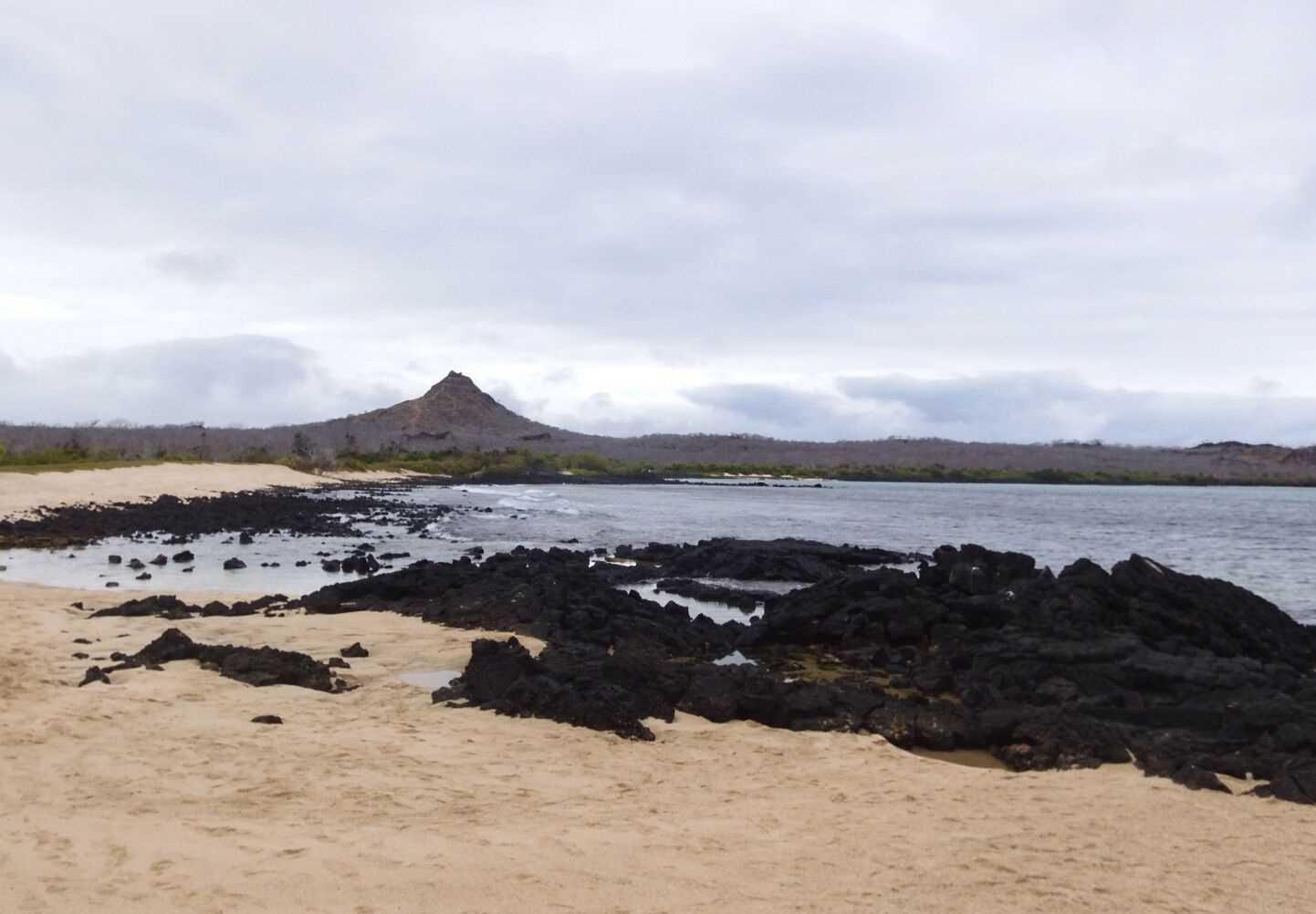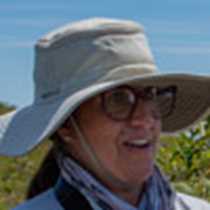Today we had a great day on the western side of Santa Cruz Island. We started with a dinghy ride on Venice, an estuary where we found red mangroves, white mangroves, and black mangroves. We got inside the estuary and found some baby blacktip reef sharks and adult whitetip reef sharks (Triaenodon obesus). In between the mangrove trees, we found magnificent frigatebirds (Fregata magnificens), some blue-footed boobies (Sula nebouxi), and a few American oystercatchers (Haematopus palliatus galapaguensis), an endemic subspecies.
After the dinghy ride, we walked on Cerro Dragon, where we were welcomed by a couple of flamingos. One was a greater flamingo (Phoenicopterus ruber glyphorhynchus), an endemic subspecies in the Galapagos. The other was a Chilean flamingo (Phoenicopterus chilensis), which are occasionally found in the Galapagos. The wind was beautiful and refreshing. We passed by a dry forest of palo santo trees (Burseracea gravens) and prickly pear cactus (Opuntia echios gigantea). We also found leatherleaf and chaff flowers.
Flamingos feed on brine shrimp (Artemia) and water boatmen (Halobates), a water insect that walks on the surface of the water. To feed on these small invertebrates, flamingos scoop up the mud and use their tongues and tiny teeth to filter out the invertebrates. Flamingos constantly walk on the mud to bring out the invertebrates because brine shrimp molt and hide in the mud. As we walked through the tidal zone, we also found a lava gull (Leocophaeus fulliginosa).
Midmorning, we went snorkeling at Guy Fawkes and found beautiful fish, including yellow-tailed razor fish, parrotfish, rainbow wrasses, and young blue damselfish with iridescent spots.
In the midafternoon, we went kayaking and paddleboarding in Borrero, and we found many birds along the mangroves, including lava herons, yellow-crowned night herons, and frigatebirds.
In the late afternoon, we circumnavigated Daphne Major Islet. We found lots of Nazca boobies (Sula granti) perched on the rocks as red-billed tropicbirds (Phaeton aetereus) passed by. A British American couple from Oxford University studied Darwin finches for approximately 40 years here. The couple studied the beak shapes of the birds in hopes of understanding the process of evolution in these birds that breed very quickly.







